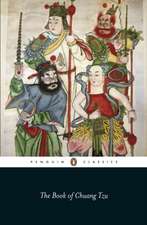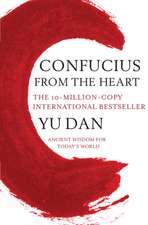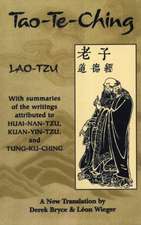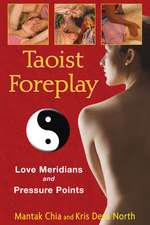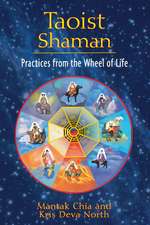Shinto: A History
Autor Helen Hardacreen Limba Engleză Hardback – 26 ian 2017
to deities called Kami. These rituals are practiced in innumerable shrines across the realm, so that local rites mirror the monarch's ceremonies. Through this theatre of state, it is thought, the human, natural, and supernatural worlds will align in harmony and prosper. Often called "the indigenous religion of Japan," Shinto's institutions, rituals, and symbols are omnipresent throughout the island nation. But, perhaps surprisingly, both its religiosity and its Japanese origins have been questioned. Hardacre investigates the claims about Shinto as the embodiment of
indigenous tradition, and about its rightful place in the public realm. Shinto has often been represented in the West as the engine that drove Japanese military aggression. To this day, it is considered provocative for members of the government to visit the Yasukuni Shrine in Tokyo, which honors the
Japanese war dead, and this features as a source of strain in Japan's relations with China and Korea. The Yasukuni Shrine is a debated issue in Japanese national politics and foreign relations and reliably attracts intensive media coverage. Hardacre contends, controversially, that it was the Allied
Occupation that created this stereotype of Shinto as the religion of war, when in fact virtually all branches of Japanese religions were cheerleaders for the war and imperialism. The history and nature of Shinto are subjects of vital importance for understanding contemporary Japan, its politics, its international relations, and its society. Hardacre's magisterial work will stand as the definitive reference for years to come.
Preț: 296.01 lei
Preț vechi: 356.51 lei
-17% Nou
56.64€ • 59.56$ • 46.80£
Carte disponibilă
Livrare economică 17-22 martie
Livrare express 12-18 martie pentru 120.22 lei
Specificații
ISBN-10: 0190621710
Pagini: 720
Ilustrații: 83 illustrations
Dimensiuni: 163 x 239 x 43 mm
Greutate: 1.16 kg
Editura: Oxford University Press
Colecția OUP USA
Locul publicării:New York, United States
Descriere
Distinguished scholar of Japanese religions and culture Helen Hardacre offers the first comprehensive history of Shinto, the ancient and vibrant tradition whose colorful rituals are still practiced today. Under the ideal of Shinto, a divinely descended emperor governs through rituals offered
to deities called Kami. These rituals are practiced in innumerable shrines across the realm, so that local rites mirror the monarch's ceremonies. Through this theatre of state, it is thought, the human, natural, and supernatural worlds will align in harmony and prosper.
Often called "the indigenous religion of Japan," Shinto's institutions, rituals, and symbols are omnipresent throughout the island nation. But, perhaps surprisingly, both its religiosity and its Japanese origins have been questioned. Hardacre investigates the claims about Shinto as the embodiment of
indigenous tradition, and about its rightful place in the public realm. Shinto has often been represented in the West as the engine that drove Japanese military aggression. To this day, it is considered provocative for members of the government to visit the Yasukuni Shrine in Tokyo, which honors the
Japanese war dead, and this features as a source of strain in Japan's relations with China and Korea. The Yasukuni Shrine is a debated issue in Japanese national politics and foreign relations and reliably attracts intensive media coverage. Hardacre contends, controversially, that it was the Allied
Occupation that created this stereotype of Shinto as the religion of war, when in fact virtually all branches of Japanese religions were cheerleaders for the war and imperialism.
The history and nature of Shinto are subjects of vital importance for understanding contemporary Japan, its politics, its international relations, and its society. Hardacre's magisterial work will stand as the definitive reference for years to come.
Recenzii
Her portrayal of the history of Shinto is based on decades of her own research, and undoubtedly this work will occupy the rank of a standard work for a long time, both for students and specialists in the field. Shinto research will benefit greatly as a whole. After the turning point marked by the revolutionary approach of Kuroda Toshio, international research on Shinto has since then led to a sometimes ideological dogmatization of what might be said and not. Helen Hardacre's book gives a fresh breath to the debate, which can only deepen our further understanding of the still-puzzling topic of Shinto.
Shinto: A History is a well written and interesting book, worth the time of readers with an interest in Shinto or Japanese history in general.
This brilliant study... is a welcome addition... a source of valuable teaching material, and more in general a must-read
Hardacre's achievement in this work will be hard to supersede. This book could be used in all kind of courses, from introductory or advanced undergraduate to graduate seminars, not only on Japanese religions but Japanese culture in general and even on comparative subjects. Students will benefit from the comprehensive and in-depth narration, while the book provides ample clues and opportunities for additional research and revisions. Shinto: A History, which in its comprehensive and encyclopedia nature does not even have a counterpart in Japanese, is a scholarly milestone that will orient for years the study of Shinto and Japanese religions as a whole.
At nearly seven hundred pages, it is difficult to think of any adjective other than "magisterial" to describe Hardacre's new survey on Shinto... As the single most comprehensive book on Shinto, Hardacre's book is a must-read...her focus on the problems of indigeneity and the public/private distinction moves the field forward considerably.
Descriptions of Shinto's influence on art and culture in the medieval era and in popular culture today enrich the readers understanding of Shinto's importance in Japanese society. Although the book is immense, it is also immensely readable, even for non-specialists.

